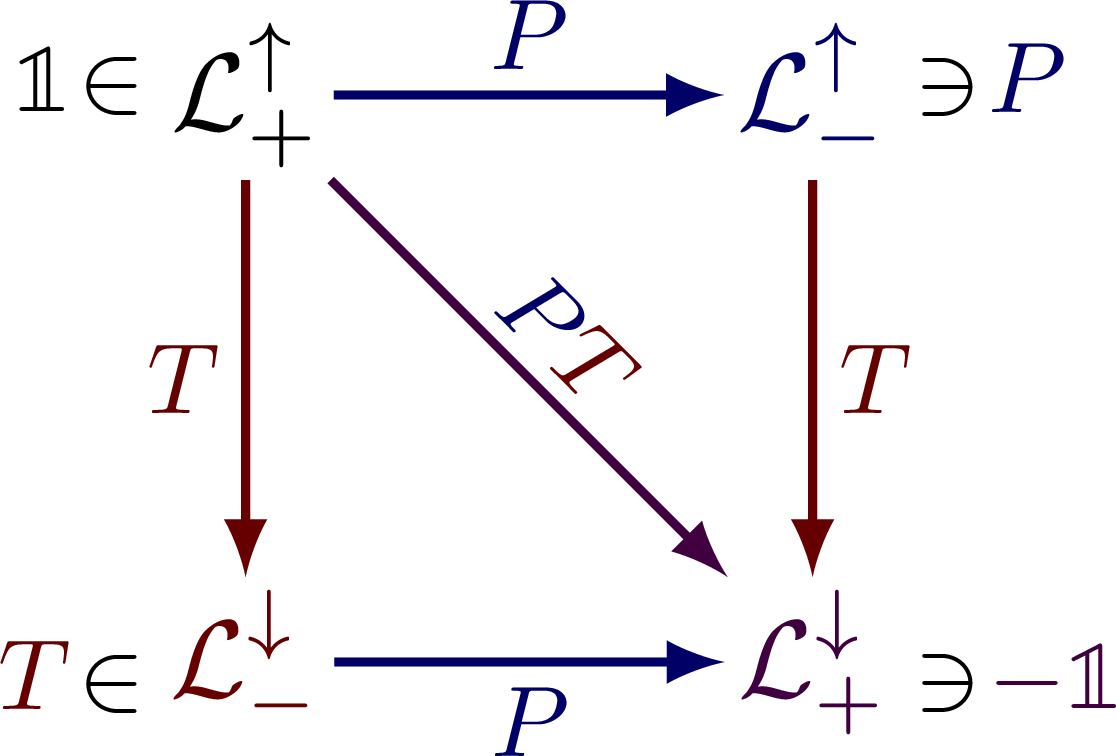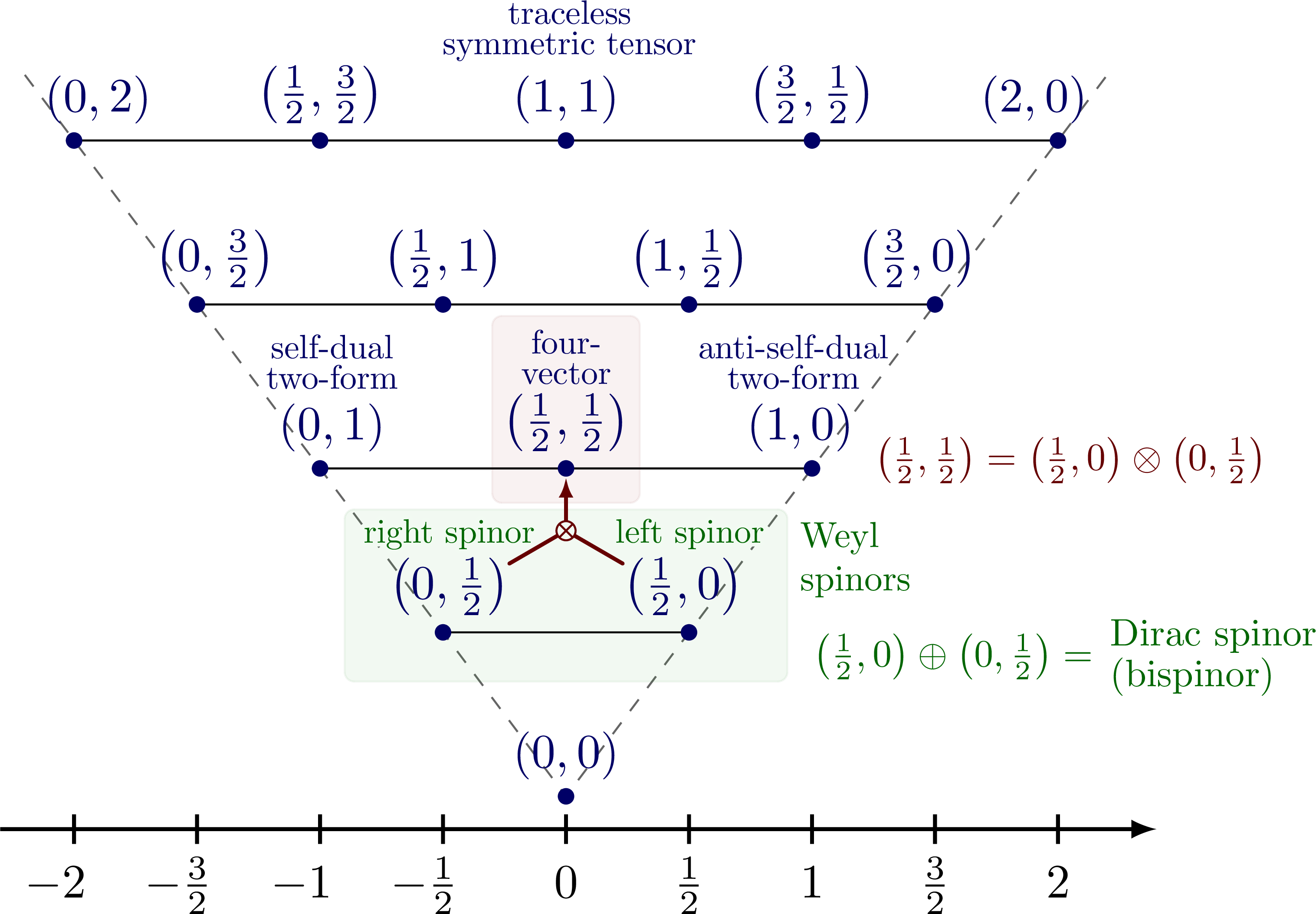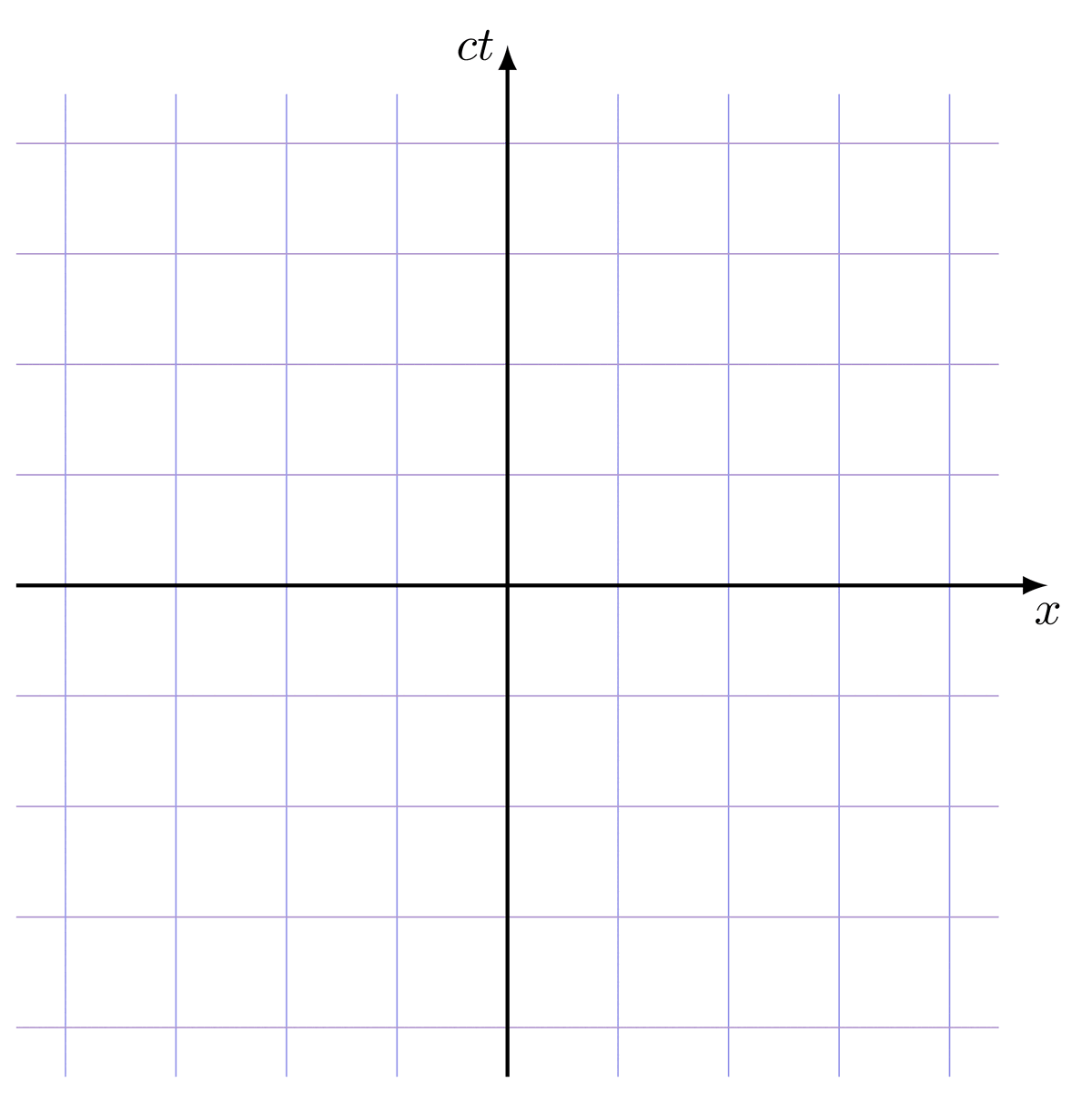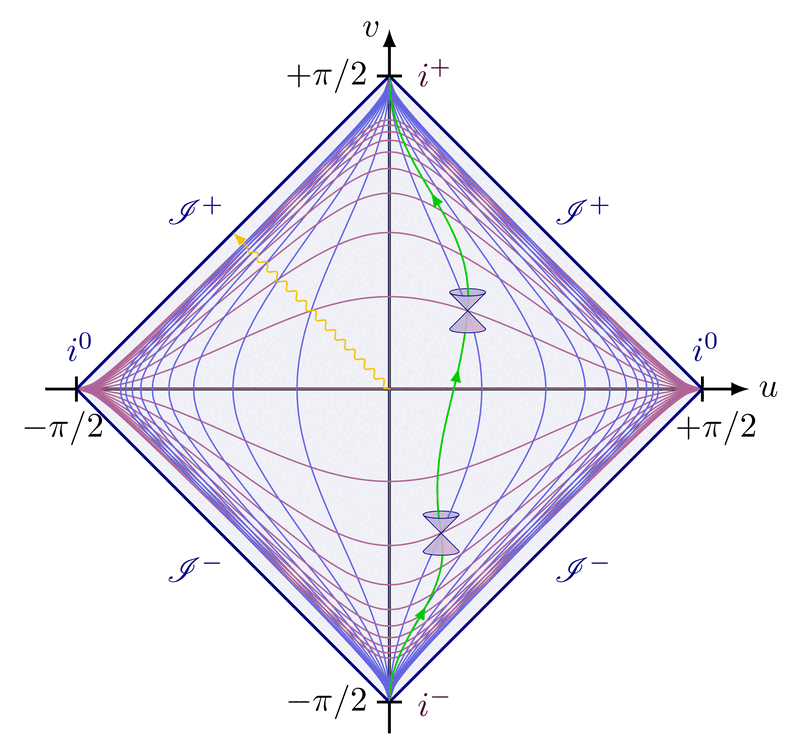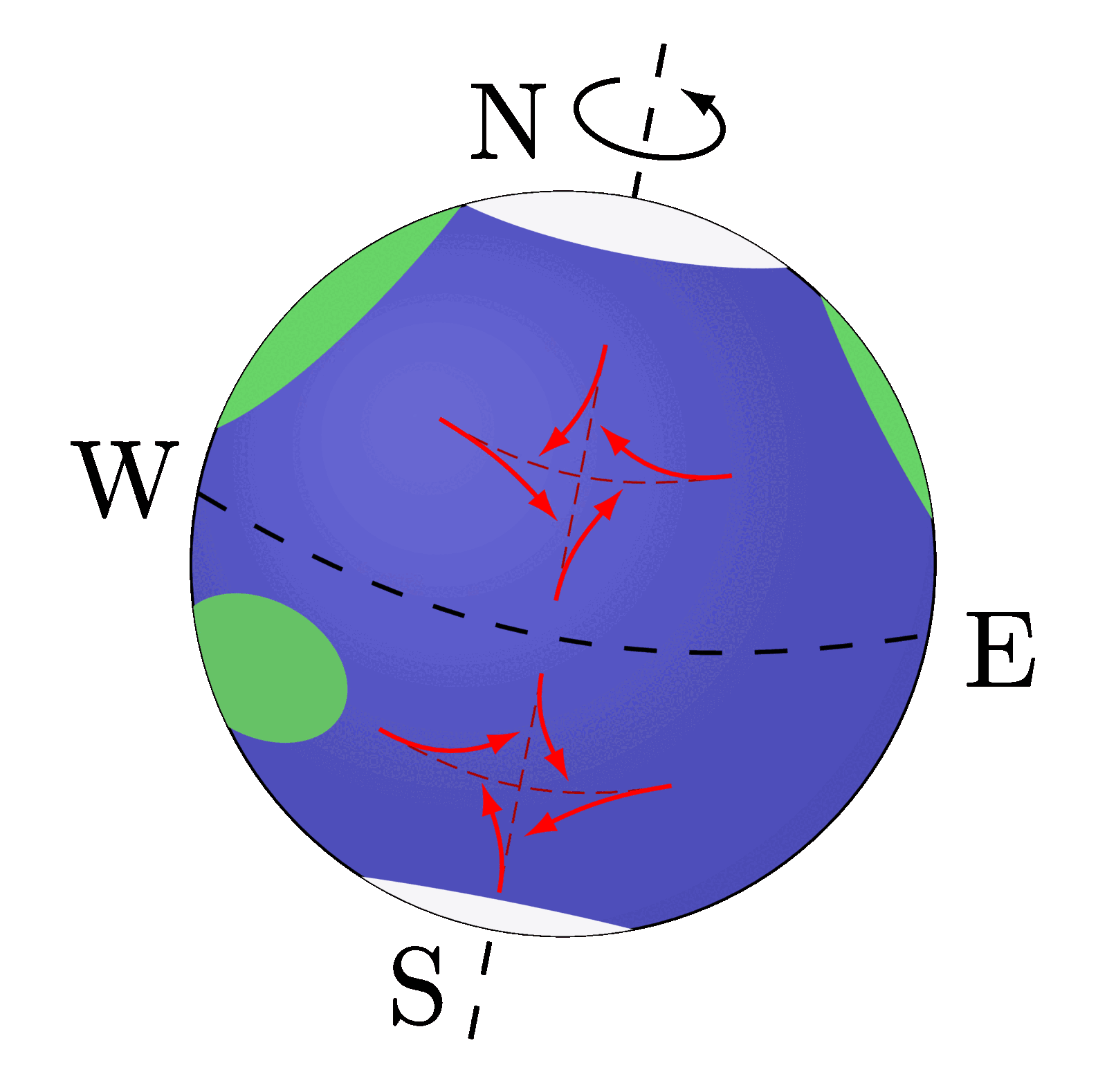Lorentz group, Lorentz transformations and representations of the double cover. Inspired by Physics from Symmetry by Jakob Schwichtenberg, and Lorentz group and mass spectrum of elementary particles by Vadim V. Varlamov.
Edit and compile if you like:
% Author: Izaak Neutelings (August 2021)% Sources & inspiration:% Physics from Symmetry (Jakob Schwichtenberg)% https://doi.org/10.3390/sym8090087 (Andreas Aste, https://www.mdpi.com/2073-8994/8/9/87/htm)% https://arxiv.org/abs/1705.02227 (V.V. Varlamov)% https://en.wikiversity.org/wiki/Representation_theory_of_the_Lorentz_group\documentclass[border=2pt,tikz]{standalone}\usepackage{tikz}\usepackage{amsmath} % for \dfrac, \text, aligned\usepackage{amssymb} % for \mathfrak\usepackage{bbold} % for \mathbb\usepackage[outline]{contour} % glow around text\usetikzlibrary{arrows.meta} % to control arrow size\usepackage{xcolor} % for colored text\tikzset{>=latex} % for LaTeX arrow head\contourlength{1.2pt}\newcommand\LP{{\color{mydarkblue}P}} %\Lambda_\mathrm{P}\newcommand\LT{{\color{mydarkred}T}} %\Lambda_\mathrm{T}\colorlet{myred}{red!60!black}\colorlet{myblue}{blue!60!black}\colorlet{mygreen}{green!60!black}\colorlet{mydarkblue}{blue!40!black}\colorlet{mydarkred}{red!40!black}\colorlet{mydarkgreen}{green!40!black}\colorlet{mydarkpurple}{blue!50!red!50!black}\tikzstyle{myarr}=[-{Latex[length=4,width=3]}]\begin{document}% LORENTZ TRANSFORMATIONS\begin{tikzpicture}[scale=1.8]\def\is{1.0} % inner seperation of nodes% GROUPS\node[inner sep=\is,mydarkred] (Ld-) at (0,0) {$\mathcal{L}^\downarrow_-$};\node[inner sep=\is] (Lu+) at (0,1) {$\mathcal{L}^\uparrow_+$}; % SO+(1,3)\node[inner sep=\is,mydarkblue] (Lu-) at (1,1) {$\mathcal{L}^\uparrow_-$};\node[inner sep=\is,mydarkpurple] (Ld+) at (1,0) {$\mathcal{L}^\downarrow_+$};
Click to download: lorentz_group.tex • lorentz_group.pdf
Open in Overleaf: lorentz_group.tex


